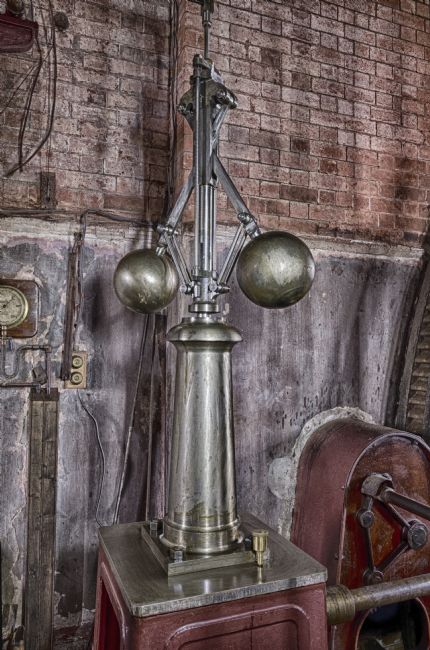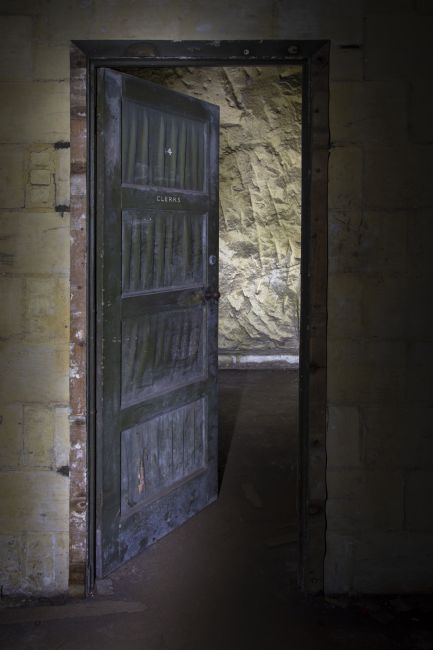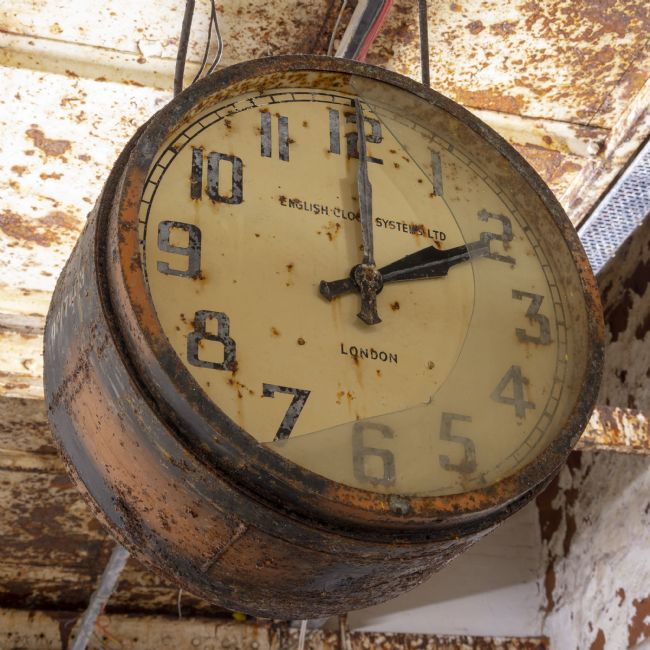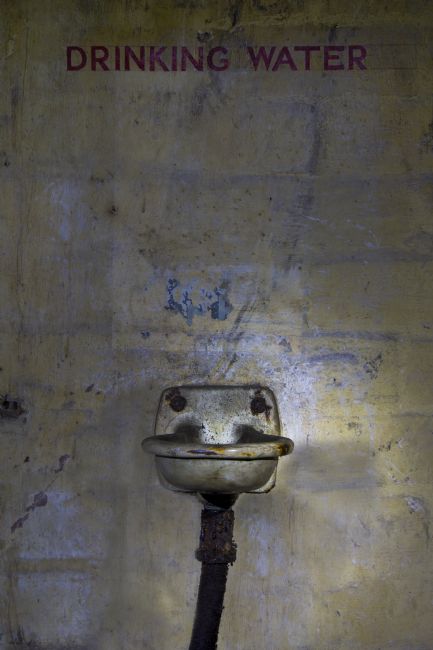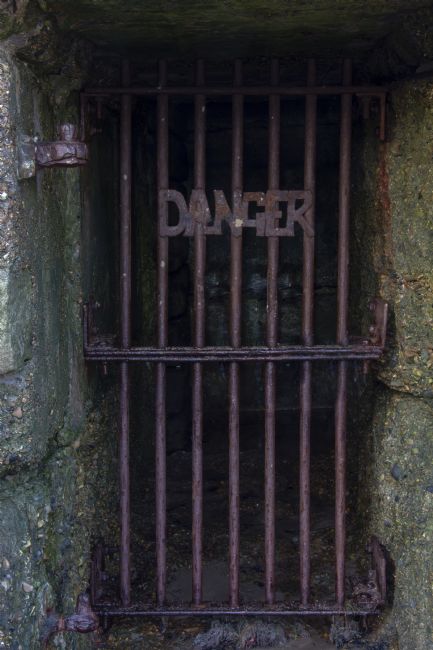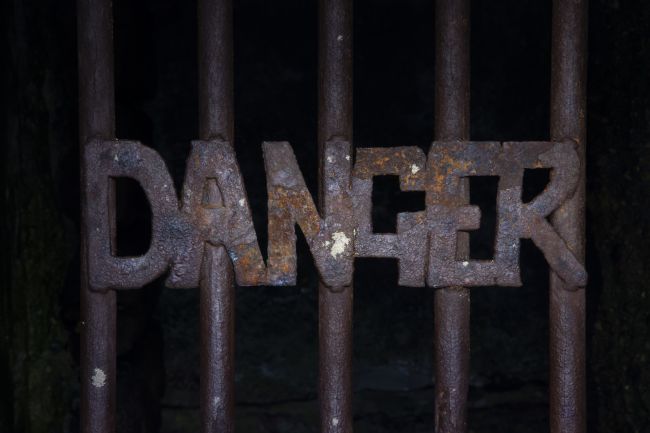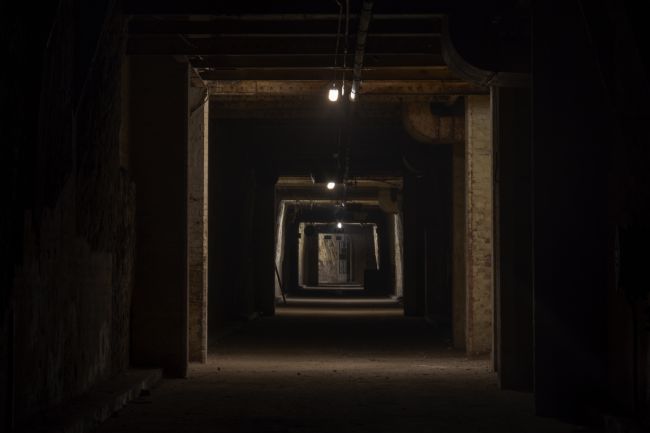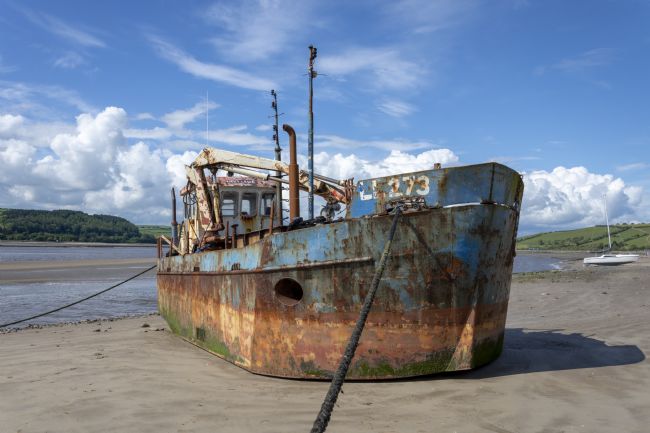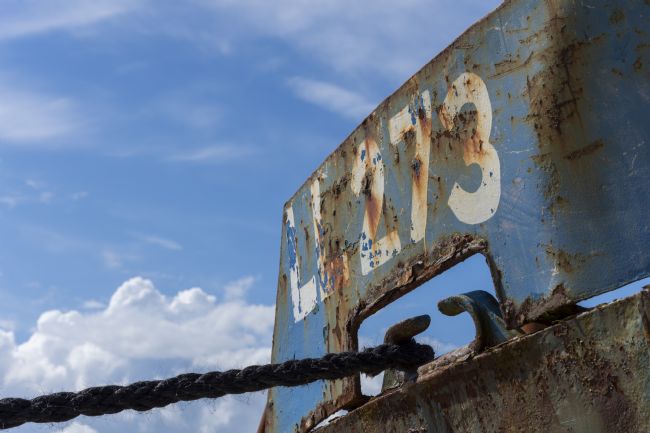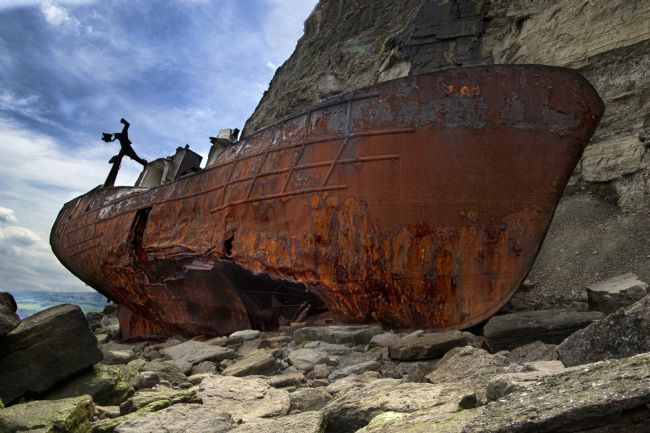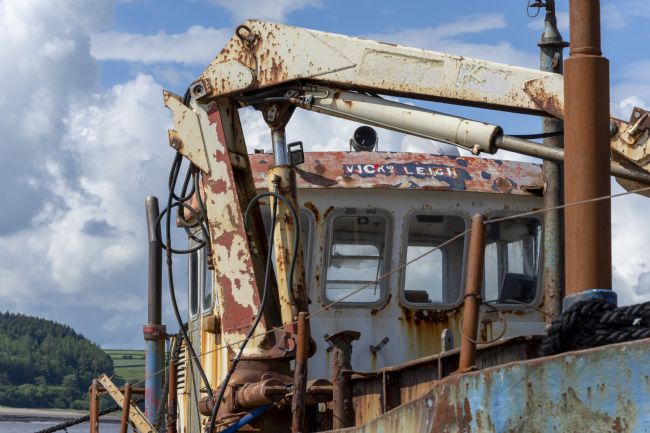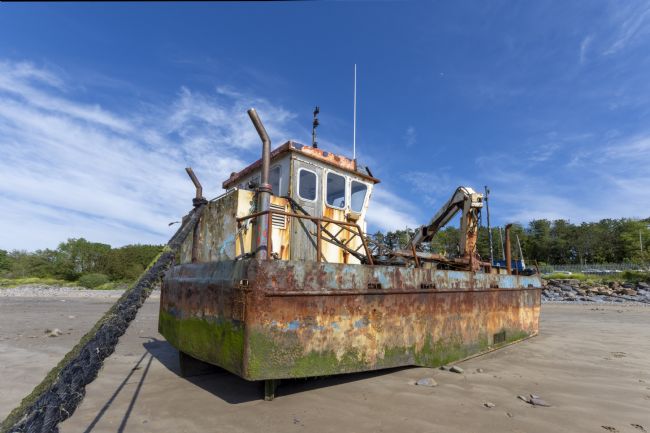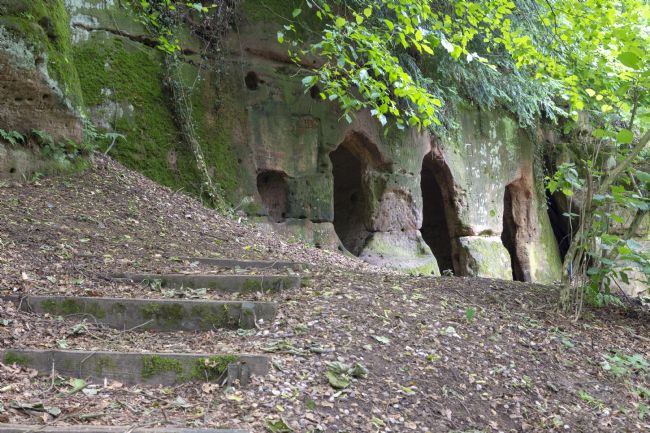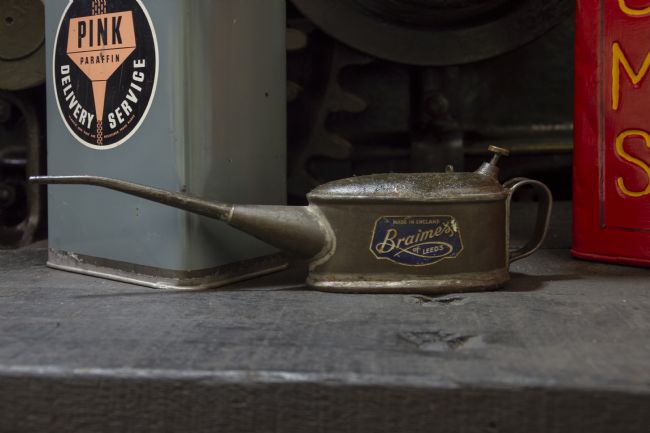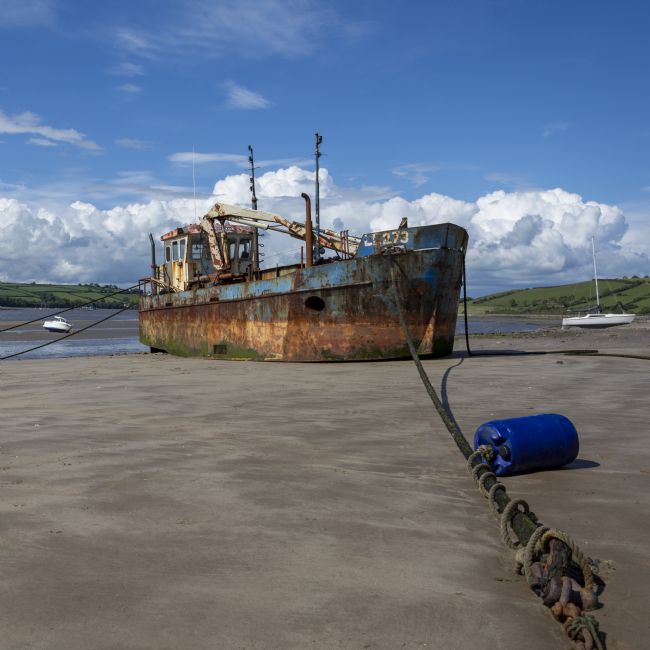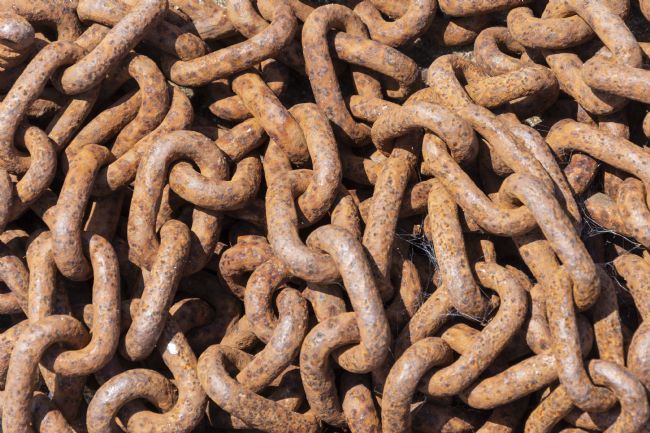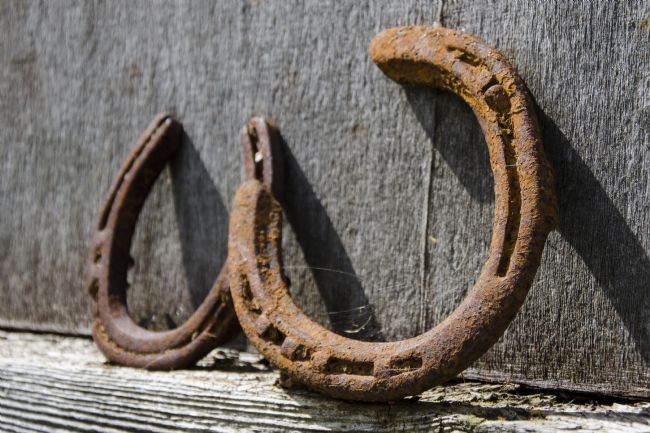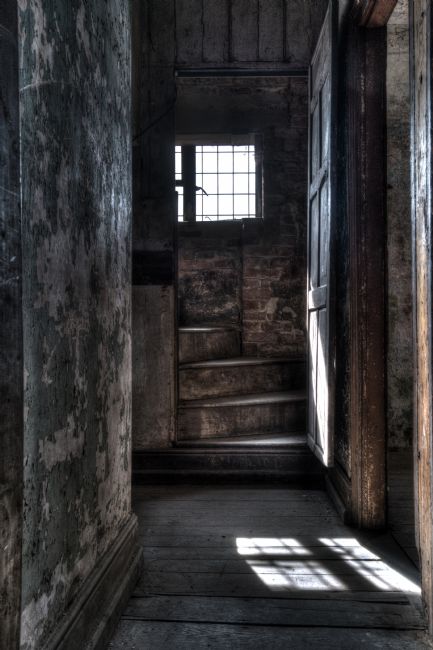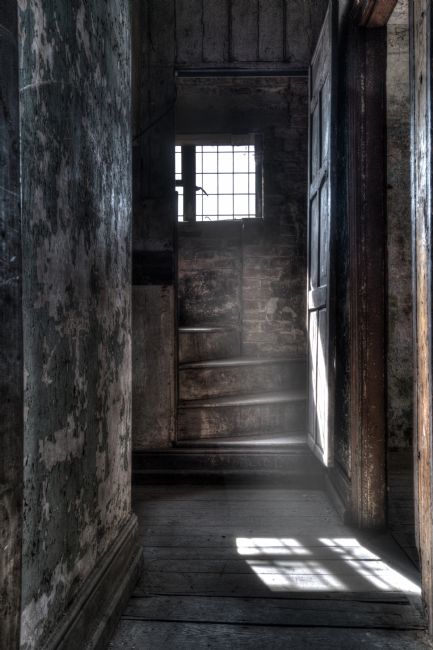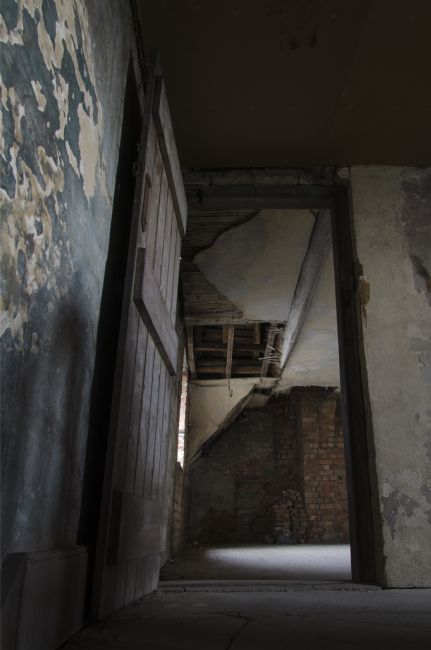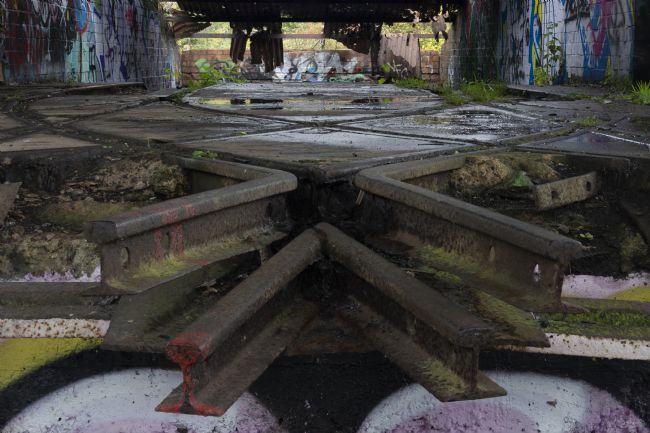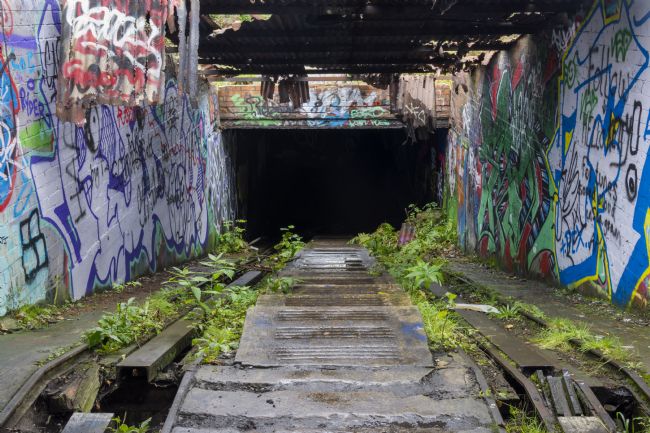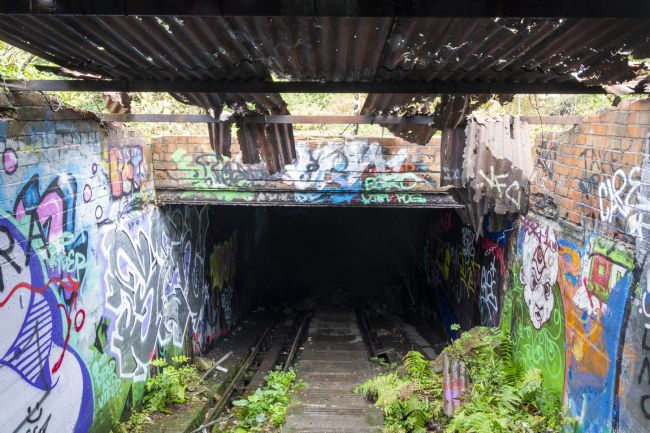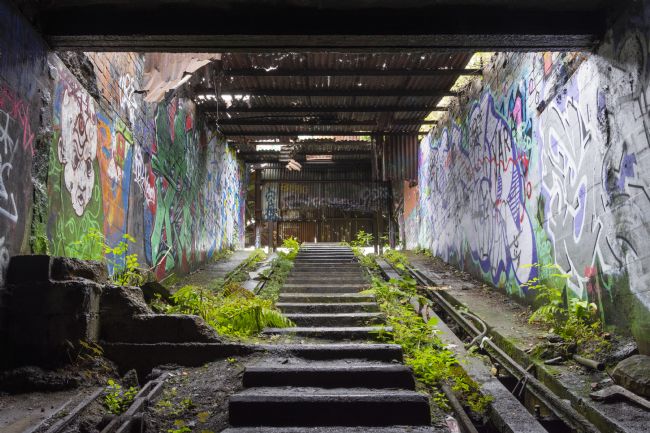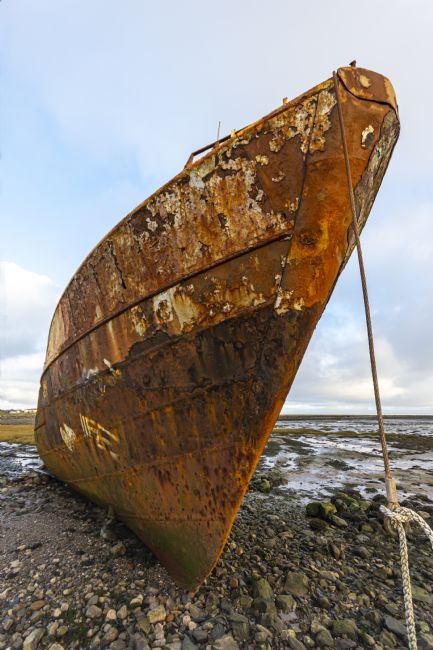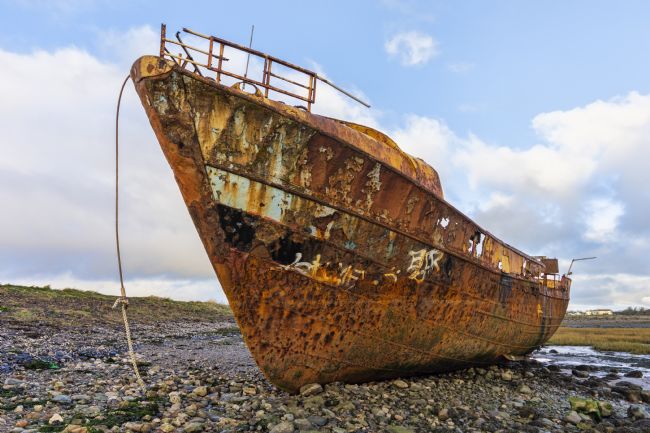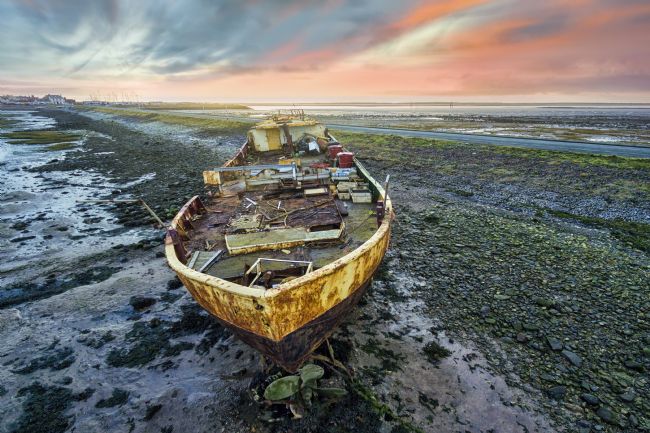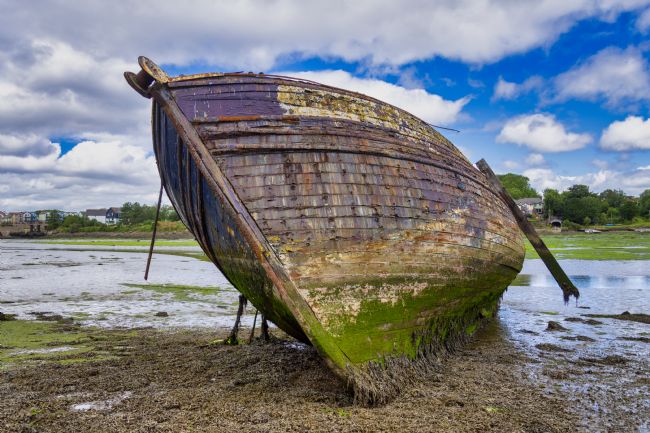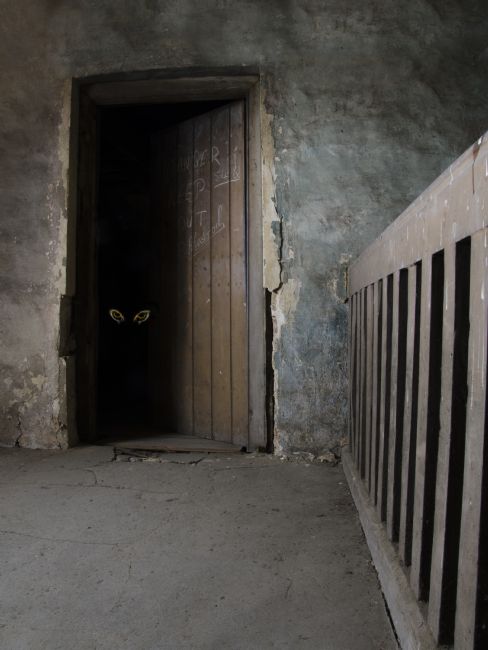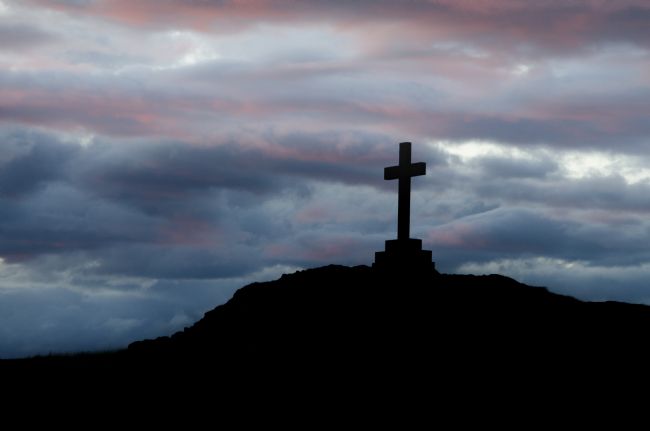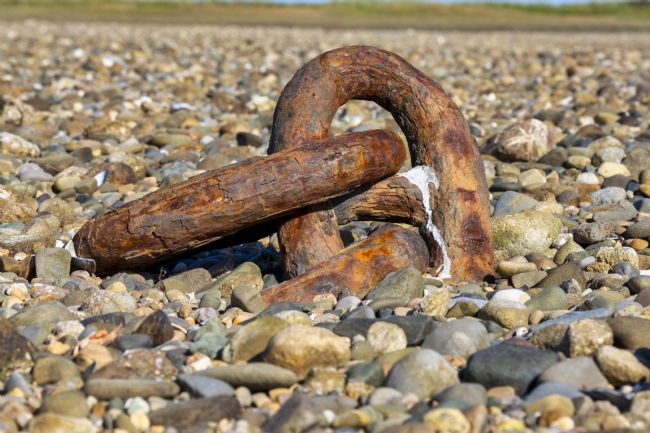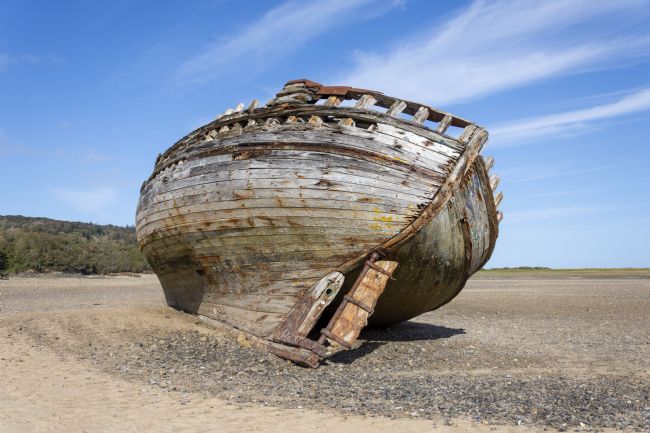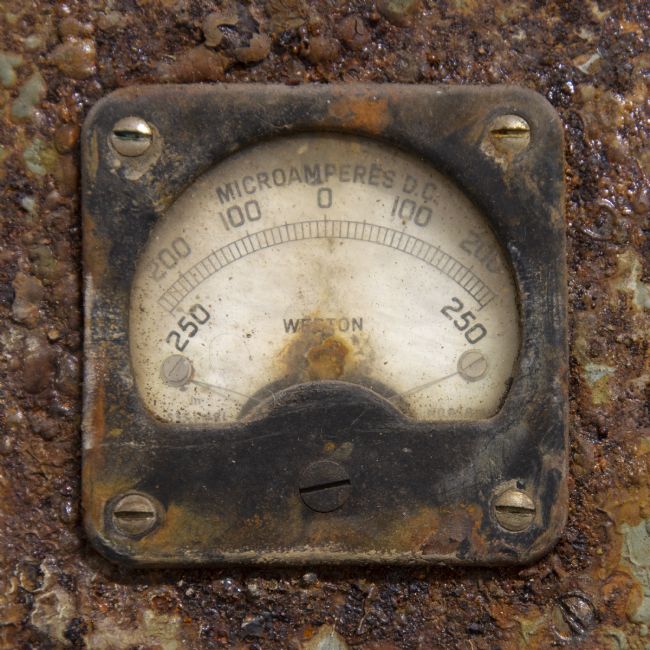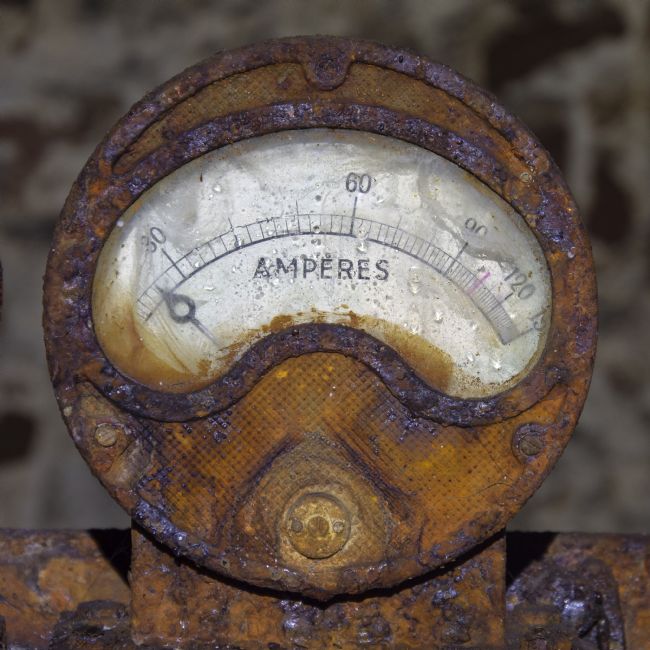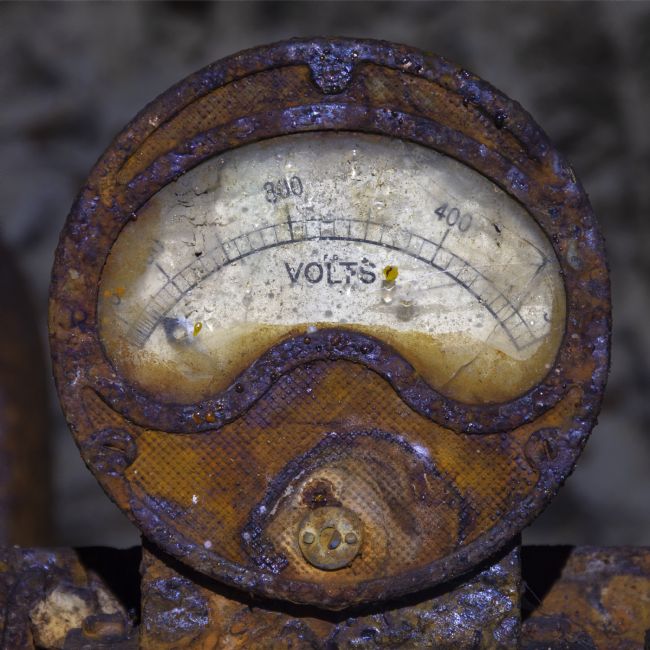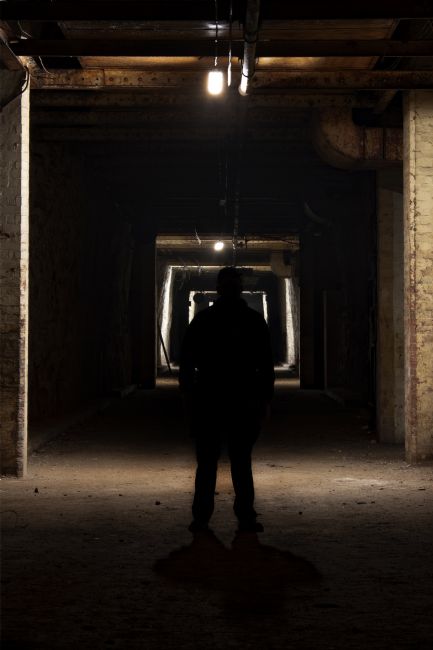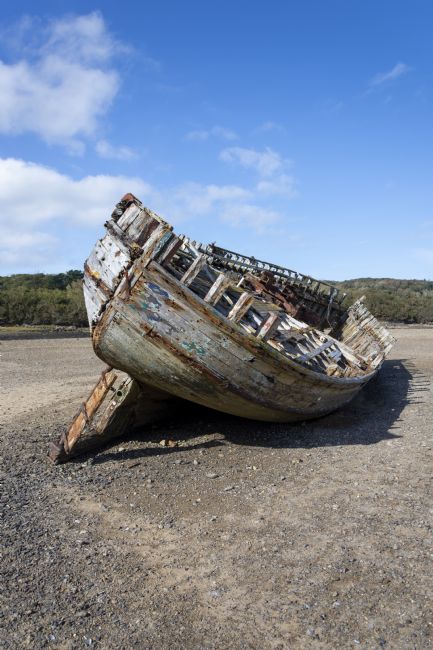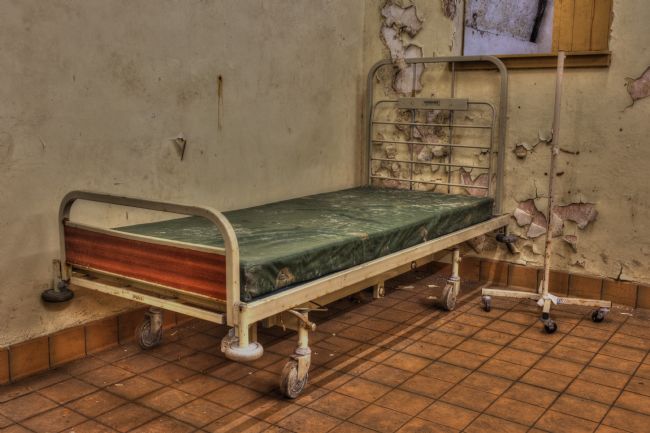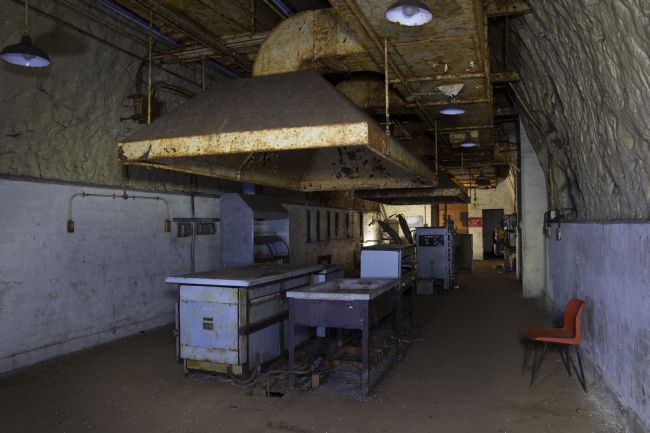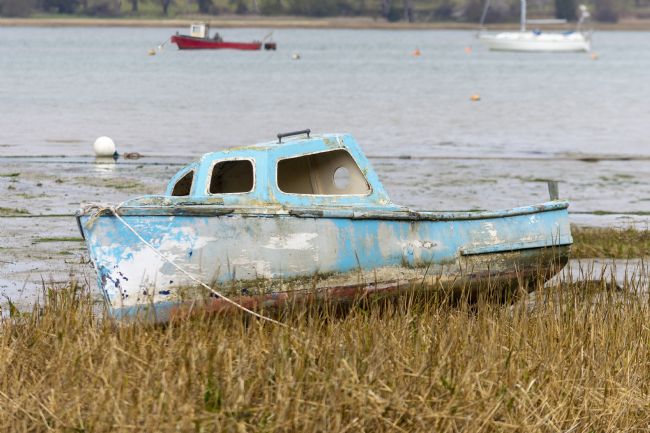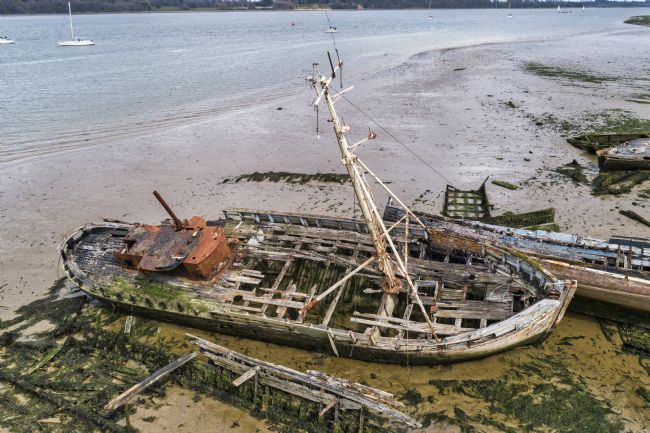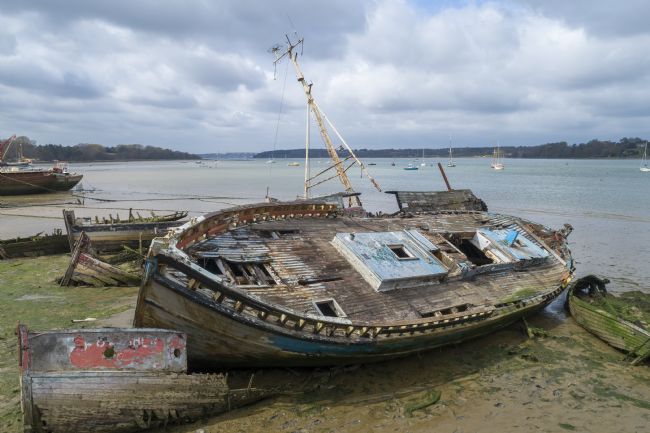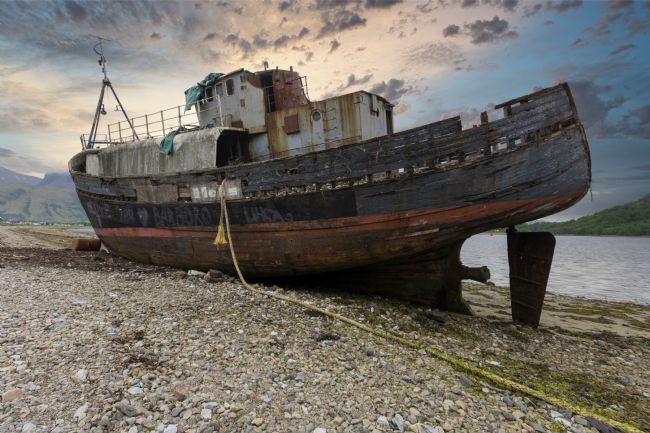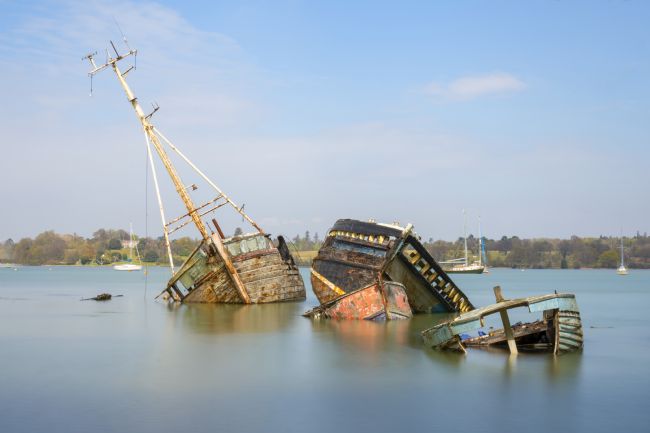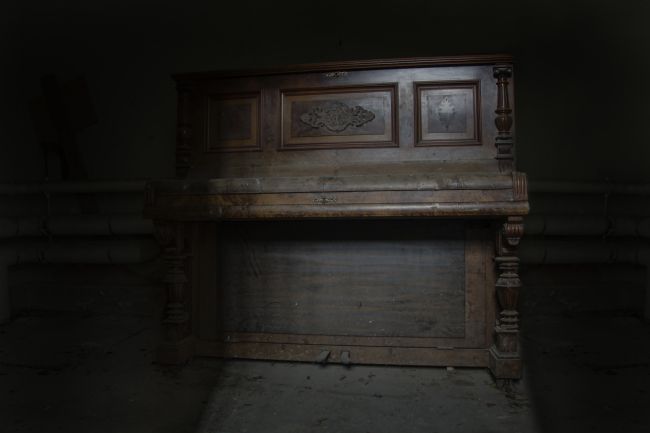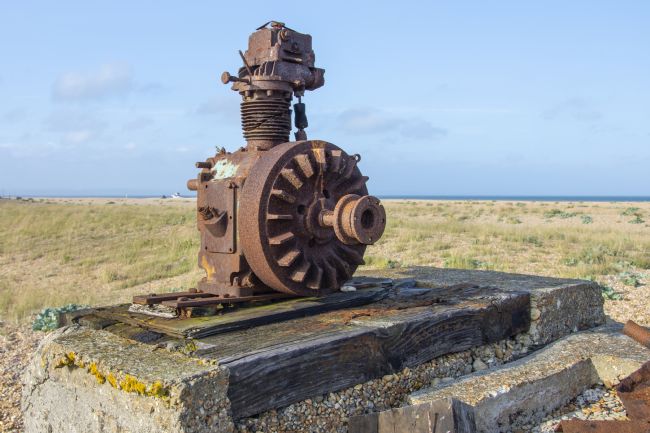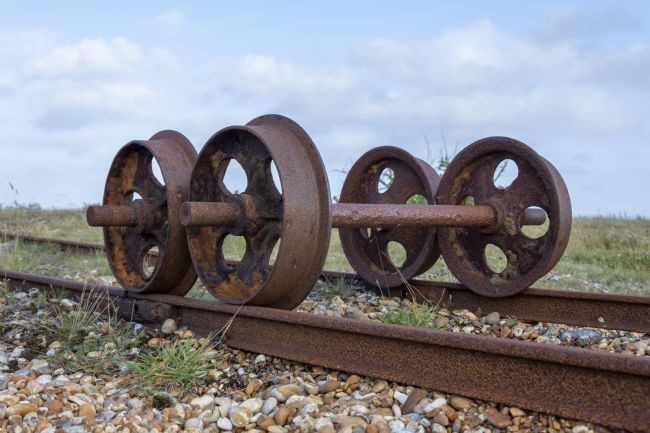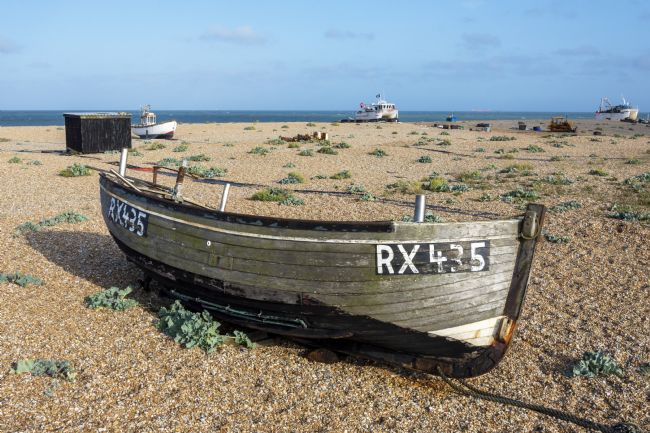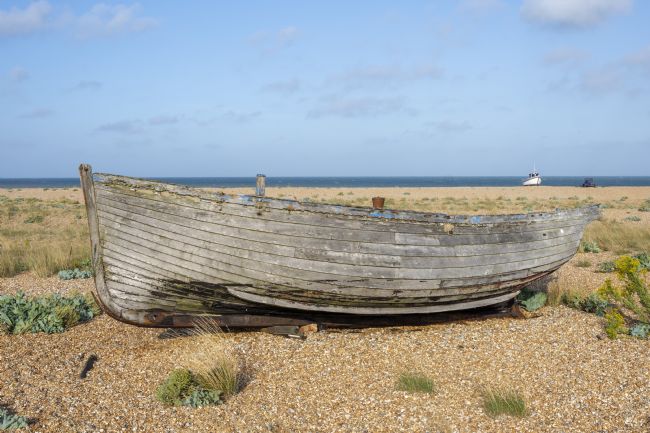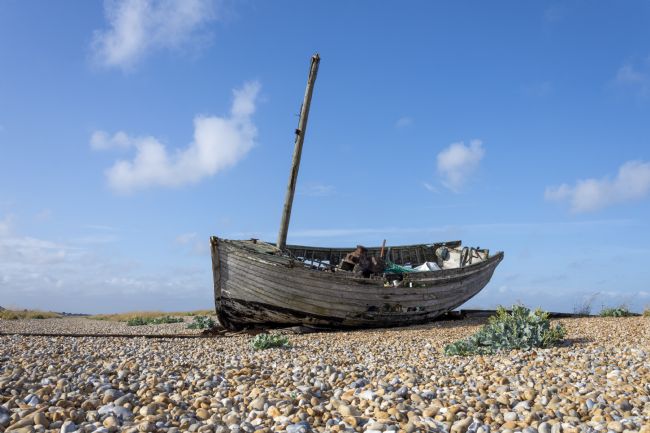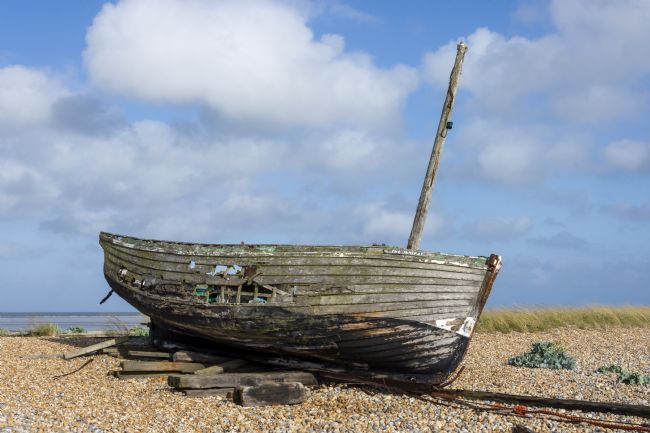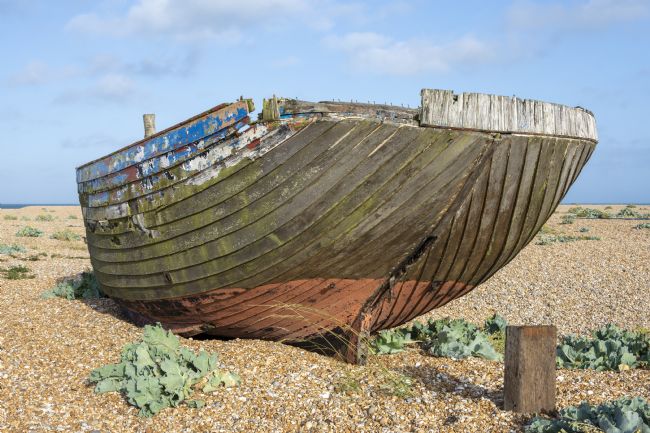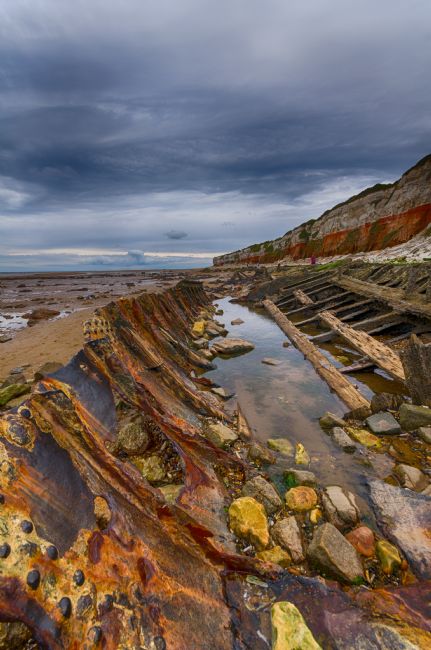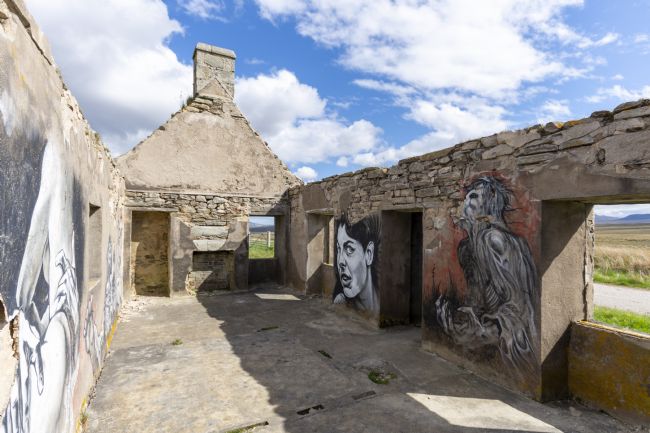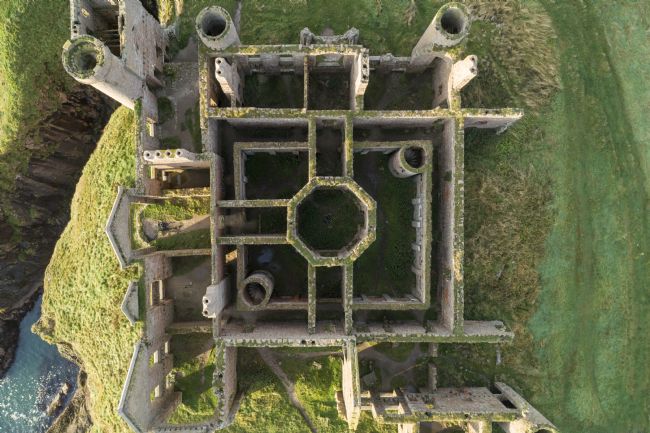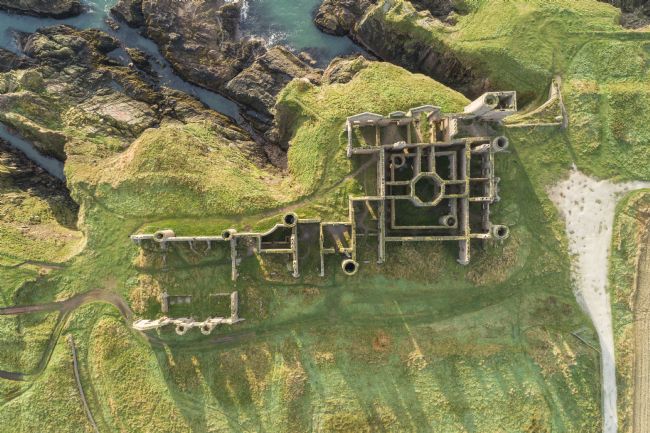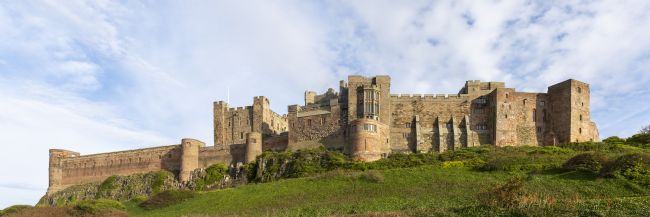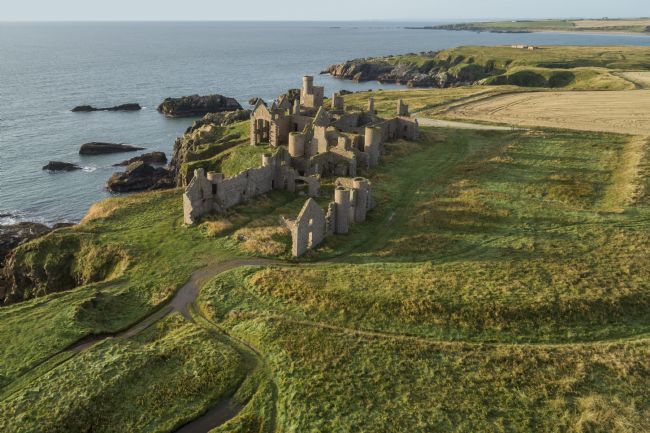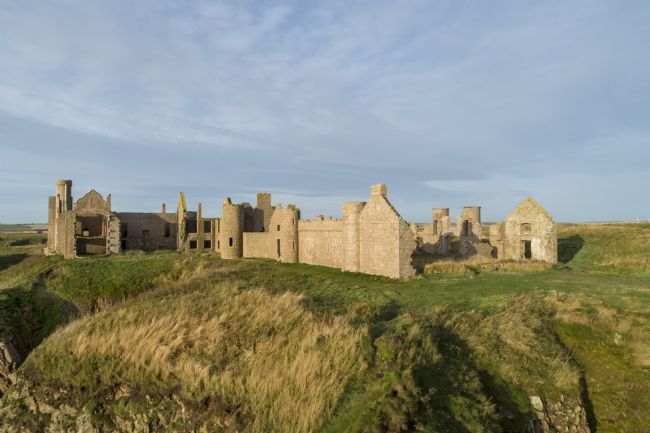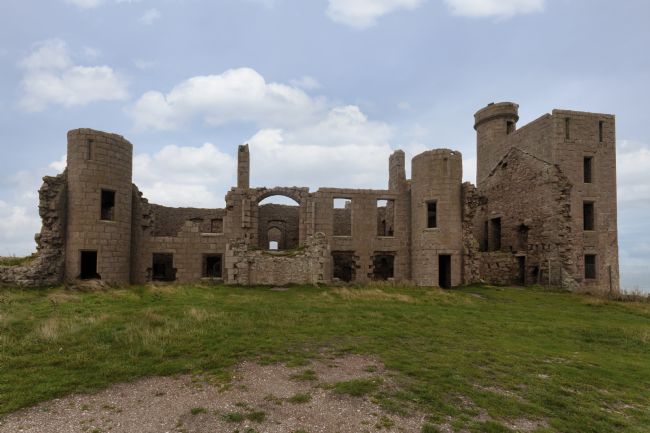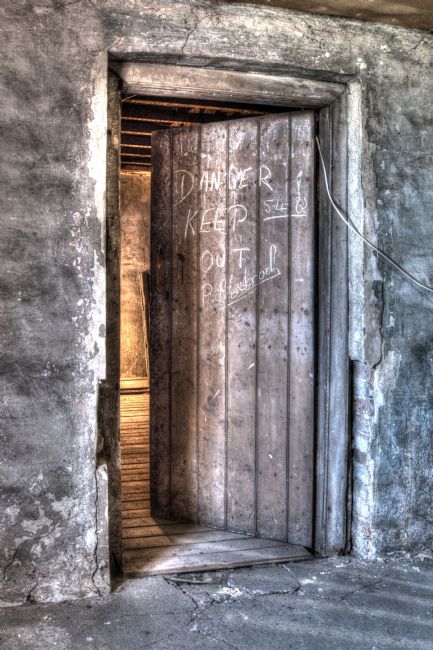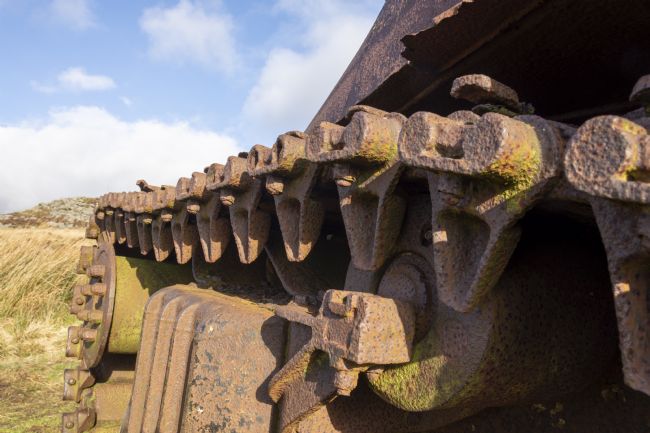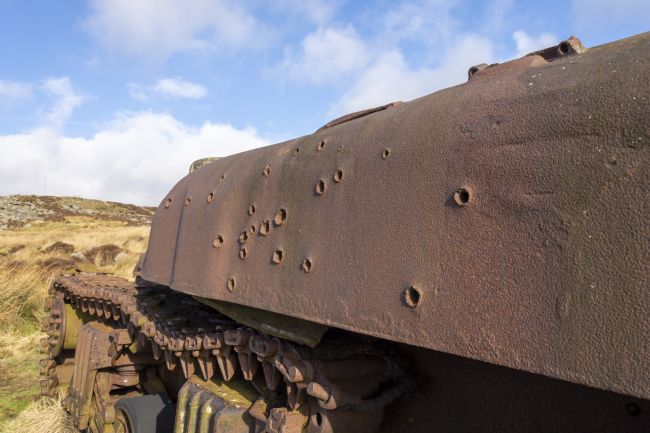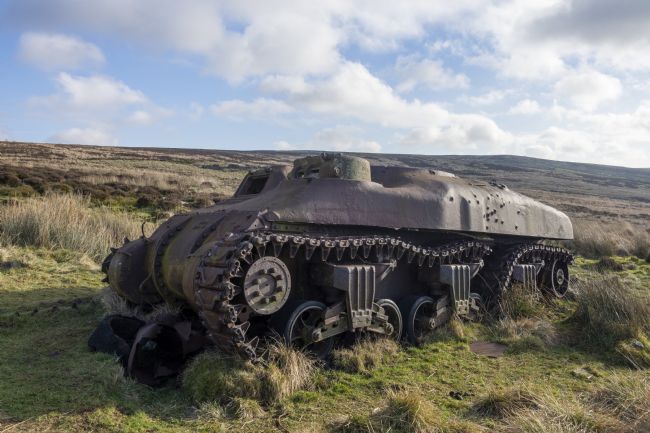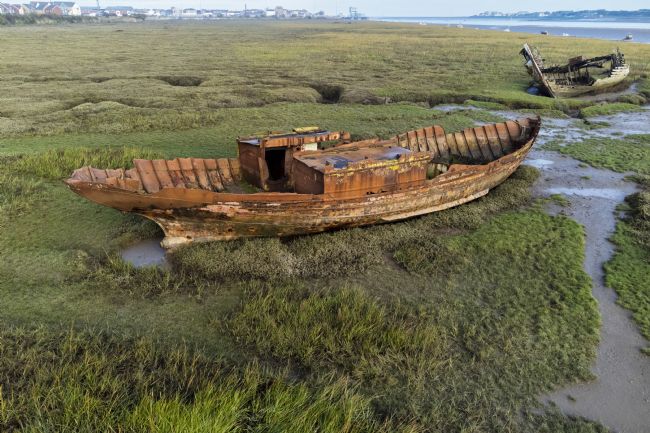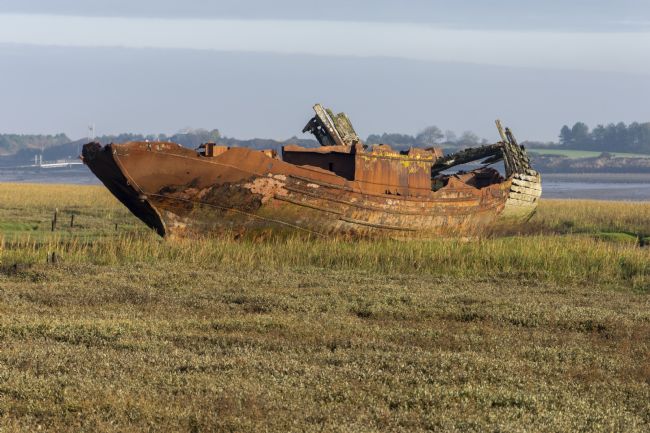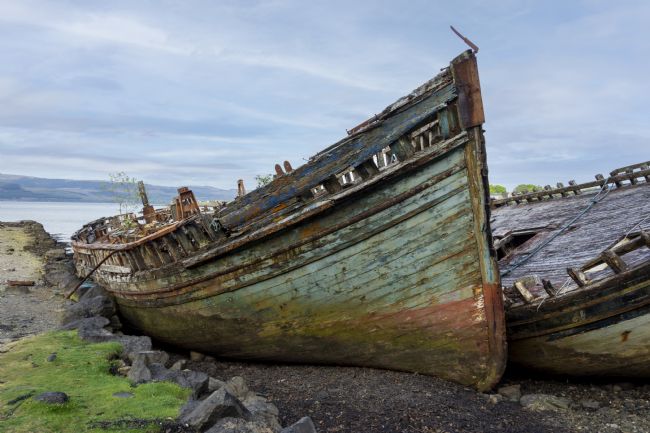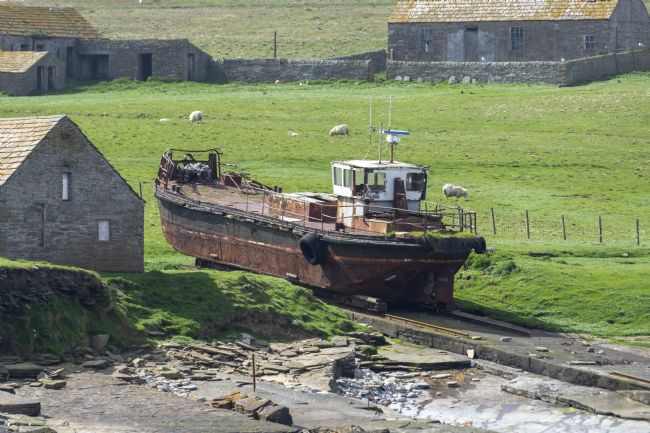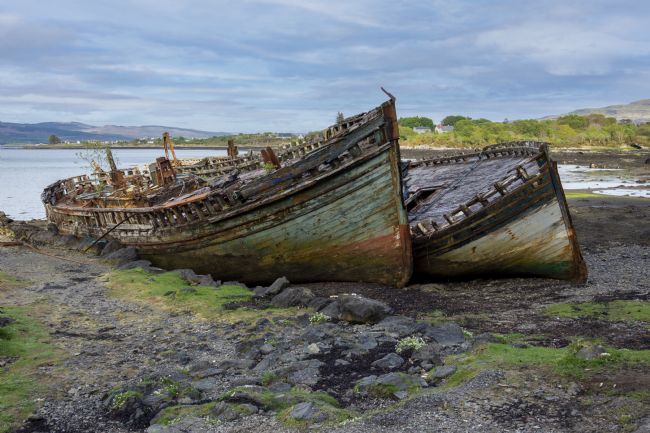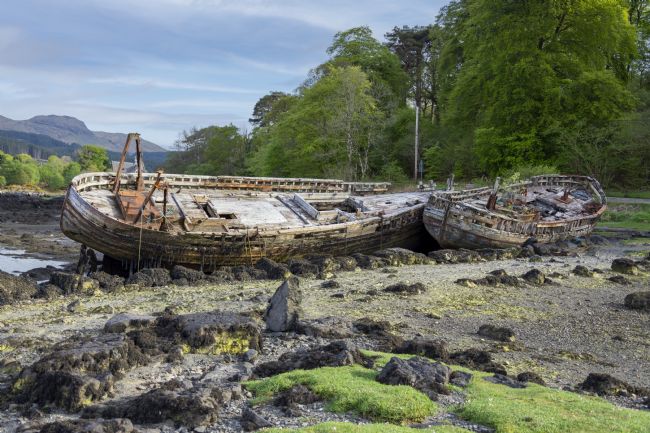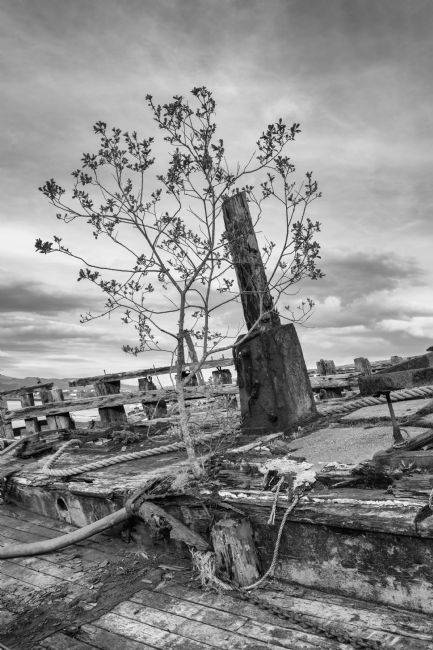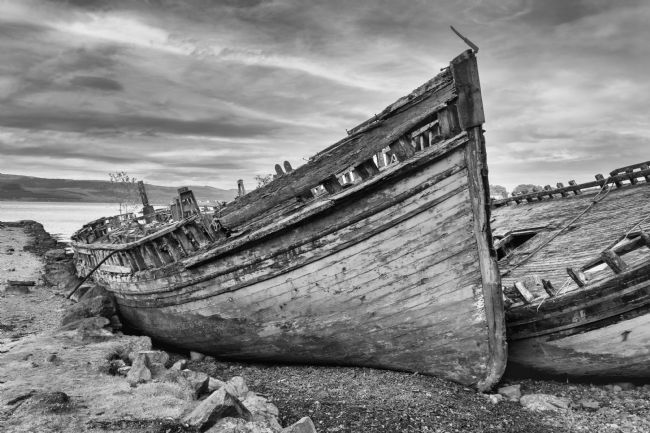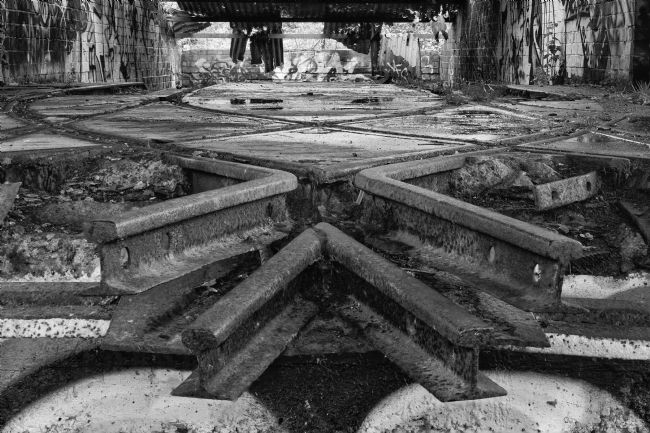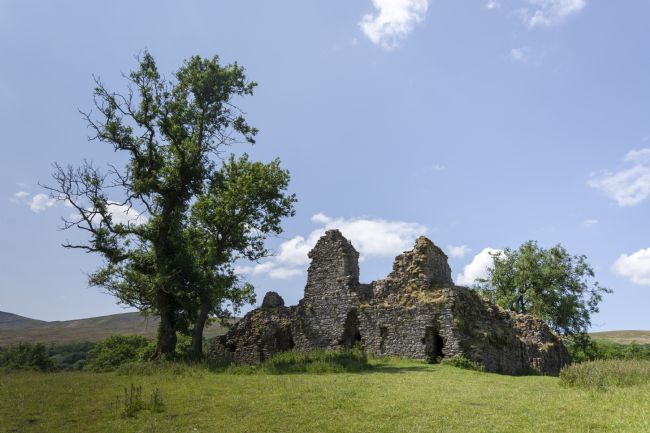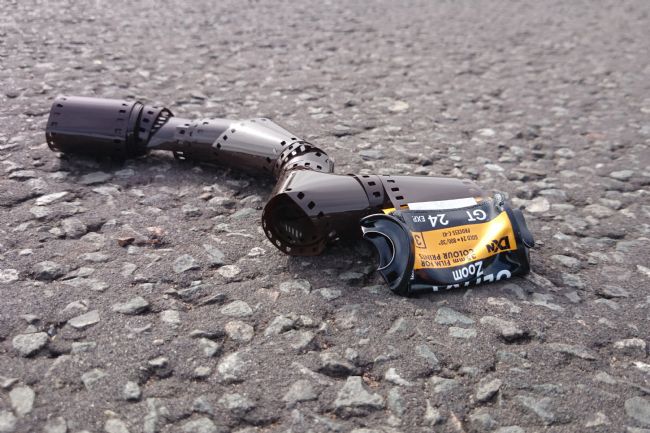These rather large and very shiny metal balls are part of the steam governing system that keeps one of the pumping engines at Claymills running at a constant speed. In a simple process the faster the engine runs, the further the weights move from the centre shaft and this shortens the link between top and bottom, thus reducing the steam supply
Long abandoned the door to the clerk's office. Over time damp and age have combined to cause the layers of wood to separate and cause the wrinkled pattern you see here.
Many, many years ago this clock showed the correct time to factory workers, since it has stopped it now only shows the correct time but twice a day. This image is also available as a square format, ideally suited to coasters.
Many, many years ago this clock showed the correct time to factory workers, since it has stopped it now only shows the correct time but twice a day. This image is also available as a landscape format, ideally suited to canvas, prints, mugs and mouse mats.
A long abandoned drinking water fountain. Hand painted lettering and you can even see the pencil guide lines that the sign writer used.
I'm not entirely sure what the danger is - or was - but this seriously rusted and bolted shut gate complete with unique lettering makes it pretty clear that you are not going in.
I'm not entirely sure what the danger is - or was - but this seriously rusted and bolted shut gate complete with unique lettering makes it pretty clear that you are not going in.
A very long, dimly lit tunnel receding into the distance
The vessel Vicky Leigh LL273 at Ferryside, Carmarthenshire. I've not been able to find much out about it other than it seems to have been there since 2014. This is one of a series of images I have of the vessel.
The vessel Vicky Leigh LL273 at Ferryside, Carmarthenshire. I've not been able to find much out about it other than it seems to have been there since 2014. This is one of a series of images I have of the vessel.
The wreck of the trawler Sarb J on the rocks near Robin Hood's Bay near Whitby
The vessel Vicky Leigh LL273 at Ferryside, Carmarthenshire. I've not been able to find much out about it other than it seems to have been there since 2014. This is one of a series of images I have of the vessel
The vessel Vicky Leigh LL273 at Ferryside, Carmarthenshire. I've not been able to find much out about it other than it seems to have been there since 2014. This is one of a series of images I have of the vessel.
Somewhere around 1130 AD or so the story goes a Derby baker known as Cornelius saw a vision of the Virgin Mary in which he was told to come here and worship God. He dug this hermitage out of the sandstone and then lived here for some 20 years before moving to a nearby more conventional dwelling.
A rather cute (in an industrial kind of way) oiling can bearing the name 'Braimes of Leeds'. These little cans bought fame to the company and are now sought after by collectors.
The vessel Vicky Leigh LL273 at Ferryside, Carmarthenshire. I've not been able to find much out about it other than it seems to have been there since 2014. This is one of a series of images I have of the vessel.
A whacky jumble of rusty chains creates a pleasingly simple yet somehow complex pattern.
A couple of rusty old horse shoes against weather worn wooden boarding
An abandoned building, stairs lit by a window and the pattern made on the floor by the sun
An abandoned building, stairs lit by a window, light beams lead to the floor
Looking up and into a very old room with fallen ceiling and light entering from the left.
A tunnel linked the Monkton Farleigh Central Ammunition Depot to the railway sidings, it was loaded in to carts and sorted in a yard below ground. The shells would then work their way on a mile-long conveyor belt, up the hillside to the CAD in Monkton Farleigh.
A tunnel linked the Monkton Farleigh Central Ammunition Depot to the railway sidings, it was loaded in to carts and sorted in a yard below ground. The shells would then work their way on a mile-long conveyor belt, up the hillside to the CAD in Monkton Farleigh.
A tunnel linked the Monkton Farleigh Central Ammunition Depot to the railway sidings, it was loaded in to carts and sorted in a yard below ground. The shells would then work their way on a mile-long conveyor belt, up the hillside to the CAD in Monkton Farleigh.
A tunnel linked the Monkton Farleigh Central Ammunition Depot to the railway sidings, it was loaded in to carts and sorted in a yard below ground. The shells would then work their way on a mile-long conveyor belt, up the hillside to the CAD in Monkton Farleigh.
The Vita Nova - Z588 started life as a Belgian trawler in 1967. She subsequently spent some time in Ireland before being de-commissioned and bought by a family to live on. It came to grief, being washed ashore in the winter of 2014/15 and has been slowly decaying ever since.
The Vita Nova (new life) - Z588 started life as a Belgian trawler in 1967. She subsequently spent some time in Ireland before being de-commissioned and bought by a family to live on. It came to grief, being washed ashore in the winter of 2014/15 and has been slowly decaying ever since.
The Vita Nova (new life) - Z588 started life as a Belgian trawler in 1967. She subsequently spent some time in Ireland before being de-commissioned and bought by a family to live on. It came to grief, being washed ashore in the winter of 2014/15 and has been slowly decaying ever since. This is a composite of my photo (the boat) and a free to use image from Pixabay (sky).
This is one of several abandoned and decaying vessels at Hooe Lake.
The writing is on the door Danger it says - Just who, or more likely what is watching and waitng .
A Christian style cross on the hillside, Llanddwyn Island, Anglesey, Wales.
At Dulas in Wales the few links of this chain have been rusting away for countless decades. Maybe once used to moor the now abandoned nearby wreck.
At Dulas on Anglesey in Wales there is an expansive area that dries out at low tide and this abandoned ship sits, slowly rotting. Despite many hours (and several friends) trying to find out what it was called it remains, to me at least - the unnamed wreck.
A long ago disused gauge for measuring micro (thousands) of an Amp. Rust and general decay of the surrounding panel add to a sad end to a precision piece of equipment.
A long ago disused gauge for measuring electrical current in Amperes (amps). Rust and general decay of the surrounding panel add to a sad end to a precision piece of equipment.
A long ago disused gauge for measuring volts). Rust and general decay of the surrounding panel add to a sad end to a precision piece of equipment.
Silhouette of a man in a tunnel.
At Dulas on Anglesey in Wales there is an expansive area that dries out at low tide and this abandoned ship sits, slowly rotting. Despite many hours (and several friends) trying to find out what it was called it remains, to me at least - the unnamed wreck.
A long abandoned hospital style bed complete with IV drip stand in a room with slowly peeling paintwork. This image has a digital filter applied to give a harsh, gritty feel.
This is one of the catering areas inside an abandoned wartime factory.
Once upon a time this little boat was someone's dream, now sadly neglected and seemingly unloved.
On the banks of the river Orwell a number of abandoned boats sit slowly decaying with each passing day. Other than one that has the optimistic graffiti For Sale painted on it I have not so far found any other details of them. Images taken from drone - I am CAA PfCO licensed.
On the banks of the river Orwell a number of abandoned boats sit slowly decaying with each passing day. Other than one that has the optimistic graffiti For Sale painted on it I have not so far found any other details of them. Images taken from drone - I am CAA PfCO licensed.
Or to be more precise the wreck of the MV Dayspring at Caol. Built in 1975 as a shipping vessel in 2011 in a storm it broke moorings and ended up here at Caol yet for some reason is known as the Corpach wreck. This is an original photograph of mine with a sky replacement in Skylum.
This is one of a series of images taken at Pin Mill on the banks of the Orwell in Suffolk. The final resting place of a small group of once proud and loved vessels of assorted sizes.
Piano in the dark and gloom of an abandoned building. I've no idea how long this piano has sat alone here - but looking at the dust and lack of footprints around it I guess it has been some years. It bears many scars and now the only neighbours it has are the equally forgotten old heating pipes running behind it.
On the shores of the sea sits this long abandoned single cylinder boat winch once used to haul boats clear of high tide. In need of a little TLC. This image also available as a black and white.
These wheels sit on the remains of a narrow gauge track which once was used to transport fishing boats across the shingle beach.
On the shingle at Dungeness a collection of boats long past their prime are slowly returning to nature, day by day, storm by storm, winter by winter.
An abandoned clinker built boat sits on the shingle at Dungeness. The metal keel plate is to protect the boat as it is hauled up onto the beach.
With its name, once proudly displayed now faded to the point of being unreadable, this boat sits in quiet dignity slowly returning to nature.
On the shingle at Dungeness a collection of boats long past their prime are slowly returning to nature, day by day, storm by storm, winter by winter.
This clinker built boat was named after the owner (Ray) and his wife (Jenny). Sadly Ray passed away some years ago and the boat now sits on the shingle slowly returning to nature.
The stern of a clinker built boat slowly decaying on the beach at Dungeness in Kent.
On the coast near Hunstanton, Norfolk rests the slowly decaying remains of the Sheraton. Built in 1907 she was requisitioned for both World Wars, finally in April 1947 she ended up beached here after breaking free of her moorings.
This house was built when the road between the Kyle of Tongue and Loch Hope which was built by the Duke of Sutherland and opened in 1830. It was literally built, like its successor on an endless number of heather bundles to stop it sinking into the peat bog. Despite this utter isolation several people found the desire to 'adorn' it. Records show that in 1881 it was home to a man of 80 along with his daughter, son in law and 5 grandchildren.
Slains castle or to be more precise New Slains Castle. Popular rumour has it that the castle and in particular the octagonal room inspired and is featured in Bram Stoker's Dracula. Originally built in 1597 by Frances Hay, Earl of Erroll it has seen many troubled times and changes of owner. The last was Sir John Ellerman who to avoid taxes had the roof removed in 1925. It is a fascinating, if not rather dangerous place to explore as there are no safety rails or fences anywhere on site.
Slains castle or to be more precise New Slains Castle. Popular rumour has it that the castle and in particular the octagonal room inspired and is featured in Bram Stoker's Dracula. In this image you can clearly see how the castle was added to several times over the course of centuries. Originally built in 1597 by Frances Hay, Earl of Erroll it has seen many troubled times and changes of owner. The last was Sir John Ellerman who to avoid taxes had the roof removed in 1925. It is a fascinating, if not rather dangerous place to explore as there are no safety rails or fences anywhere on site.
Slains castle or to be more precise New Slains Castle. Popular rumour has it that the castle and in particular the octagonal room inspired and is featured in Bram Stoker's Dracula. Originally built in 1597 by Frances Hay, Earl of Erroll it has seen many troubled times and changes of owner. The last was Sir John Ellerman who to avoid taxes had the roof removed in 1925. It is a fascinating, if not rather dangerous place to explore as there are no safety rails or fences anywhere on site.
Bamburgh Castle covers approximately 9 acres - a huge site even by today's standards.
Slains castle or to be more precise New Slains Castle. Popular rumour has it that the castle and in particular the octagonal room inspired and is featured in Bram Stoker's Dracula. Originally built in 1597 by Frances Hay, Earl of Erroll it has seen many troubled times and changes of owner. The last was Sir John Ellerman who to avoid taxes had the roof removed in 1925. It is a fascinating, if not rather dangerous place to explore as there are no safety rails or fences anywhere on site.
Slains castle or to be more precise New Slains Castle. Popular rumour has it that the castle and in particular the octagonal room inspired and is featured in Bram Stoker's Dracula. Originally built in 1597 by Frances Hay, Earl of Erroll it has seen many troubled times and changes of owner. The last was Sir John Ellerman who to avoid taxes had the roof removed in 1925. It is a fascinating, if not rather dangerous place to explore as there are no safety rails or fences anywhere on site.
Slains castle or to be more precise New Slains Castle. Popular rumour has it that the castle and in particular the octagonal room inspired and is featured in Bram Stoker's Dracula. Originally built in 1597 by Frances Hay, Earl of Erroll it has seen many troubled times and changes of owner. The last was Sir John Ellerman who to avoid taxes had the roof removed in 1925. It is a fascinating, if not rather dangerous place to explore as there are no safety rails or fences anywhere on site.
A derelict building with a warning suggesting that maybe keeping out would be a good idea
This is a long abandoned Ram 3 tank that saw out its days as a target. Over 2,000 Ram 3s were built between November 1941 and July 1943 and despite this being within WW2 they were never used in combat, more as training vehicles.
Long ago abandoned after being used for target practice this Ram 3 tank sits rusting alone. The bullet holes are exit points. Developments in small arms meant that these guns could go in, through and out both sides of the tank.
Long ago abandoned after being used for target practice this Ram 3 tank sits rusting alone.
Long ago abandoned after being used for target practice this Ram 3 tank sits rusting alone.
At Fleetwood in Lancashire there are the remains of several trawlers, abandoned after the Cod Wars between the UK and Iceland which saw the UK government pay owners to de-commission their vessels. This is just one of the metal wrecks on the site, a wooden one is in the background.
At Fleetwood in Lancashire there are the remains of several trawlers, abandoned after the Cod Wars between the UK and Iceland which saw the UK government pay owners to de-commission their vessels. Here we see a metal one in the foreground with the ribs of an older wooden one behind. It is hard to say how many are here as over the years they are decaying and sinking into the mud.
Pavonia was originally WK53 and later re-registered as HL114 just one of a cluster of three wrecks here. Now they sit, slowly decaying and possibly one of the most photographed things on the isle of Mull, Scotland. This image is also available in black and white.
On the small island of Stroma is a slipway where the Stalker now sits. At one time used to move animals and supplies between Stroma and the mainland now Stroma is uninhabited the Stalker sits unloved and unused.
Pavonia (nearest to the slipway) was originally WK53 and later re-registered as HL114. The boat to the right was known at various times as Mint BF300, Wistaria OB327, and finally Elsie May) and worked out of Oban in the late 60s to early 70s. Now they sit, slowly decaying and possibly one of the most photographed things on the isle of Mull, Scotland. This image is also available in black and white.
The nearest boat had several names over the years, Girl Wilma INS53 then Cairngorm FD353 before as we see here - Girl Claire B8 The boat furthest away was built as Pavonia WK53 in 1955 and later re-registered as HL114 based out of Hartlepool. These boats are known as the Salen wrecks and can be found on Mull, Scotland.
The long abandoned wooden vessel Pavonia, HL114 (formerly WK53) provides a home for a young tree sprouting from its deck. This image is also available in black and white.
The long abandoned wooden vessel Pavonia, HL114 (formerly WK53) provides a home for a young tree sprouting from its deck. This image is also available in colour.
Pavonia was originally WK53 and later re-registered as HL114 just one of a cluster of three wrecks here. Now they sit, slowly decaying and possibly one of the most photographed things on the isle of Mull, Scotland. This image is also available in clour.
A tunnel linked the Monkton Farleigh Central Ammunition Depot to the railway sidings, it was loaded in to carts and sorted in a yard below ground. The shells would then work their way on a mile-long conveyor belt, up the hillside to the CAD in Monkton Farleigh.
Allegedly founded by Uther Pendragon, the father of King Arthur the castle has been built, destroyed, rebuilt and finally left as a ruin over its 600 year or so history. Today it is free to visit but care should be taken as despite recent efforts to stabilise it the site remains fragile.
A roll of film, broken open and exposed.
